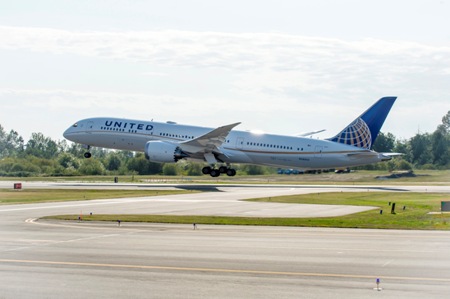Military
Why Boeing Is Dodging the DJIA Earnings and Guidance Trap
Published:
Last Updated:

For the full year, Boeing posted EPS of $8.60 on revenues of $90.76 billion, compared with year-ago EPS of $7.07 and revenues of $86.62 billion. Analysts were expecting EPS of $8.38 on revenues of $90.18 billion.
Boeing guided 2015 core EPS to a range of $8.20 to $8.40 and full-year revenue in a range of $94.5 billion to $96.5 billion. The consensus estimates for 2015 before the report call for EPS of $8.64 on revenues of $93.25 billion. The company also said it expects to deliver between 750 and 755 commercial aircraft in 2015, up from the record 723 the company delivered in 2014.
Full-year operating cash flow before pension contributions totaled $9.64 billion, down from $9.72 billion in 2013, but free cash flow rose from $6.08 billion in 2013 to $6.62 billion in 2014. The company projects operating cash flow for 2015 at more than $9 billion.
ALSO READ: 5 Stocks to Buy That Beat Earnings Estimates and Raised Guidance
The company’s advances and billings in excess of related costs — sometimes called deferred production costs — totaled $23.18 billion at the end of December, an increase of about $3 billion from the total at the end of 2013. This liability is largely due to Boeing’s program accounting method and is paid back as the company sells each new plane. The total remains stubbornly high.
Boeing delivered 195 new commercial aircraft in the fourth quarter, up more than 13% from 172 deliveries in the third quarter, and it took orders for a net 432 more planes to bring its backlog of orders to nearly 5,800.
Operating margin in the commercial division slipped by a point to 9.3% compared with the fourth quarter a year ago. Earnings from commercial aircraft sales rose by 4% in the quarter.
Boeing’s CEO said:
Strong operating performance in the final quarter of 2014 propelled us to some of our best-ever results and sealed a fifth consecutive year of core operating earnings growth. … For 2015, we will continue to build on our commercial airplanes market leadership, strengthening and repositioning our defense, space and security business and working to better meet the needs of our customers by focusing on improving productivity, executing to development plans and delivering our industry-leading portfolio of innovative aerospace products and services.
Boeing’s defense and space division revenues were down 14% year-over-year for the quarter and down 7% for the full year. Operating margins rose 1.3 points to 12.1% in the quarter and rose 0.4 points to 10.1% for the year.
ALSO READ: The Bullish and Bearish Case for Boeing in 2015
The company had a big quarter and a big year, but there are some headwinds. The falling price of fuel may cause some orders to be deferred as the airlines make do with their existing planes. To counter that, Boeing likely will have to offer steeper discounts to list prices. Another issue could be in the company’s free cash flow, which declined year-over-year in 2014, and the company’s guidance for 2015 is a little vague. Third, the deferred production costs actually increased sequentially and year-over-year. Expect to hear more about this on the company’s conference call.
Boeing’s shares traded up about 3% in the premarket Wednesday to $136.55, in a 52-week range of $116.32 to $138.39. The consensus target price for the shares was around $150.0 before the report.
Start by taking a quick retirement quiz from SmartAsset that will match you with up to 3 financial advisors that serve your area and beyond in 5 minutes, or less.
Each advisor has been vetted by SmartAsset and is held to a fiduciary standard to act in your best interests.
Here’s how it works:
1. Answer SmartAsset advisor match quiz
2. Review your pre-screened matches at your leisure. Check out the advisors’ profiles.
3. Speak with advisors at no cost to you. Have an introductory call on the phone or introduction in person and choose whom to work with in the future
Thank you for reading! Have some feedback for us?
Contact the 24/7 Wall St. editorial team.